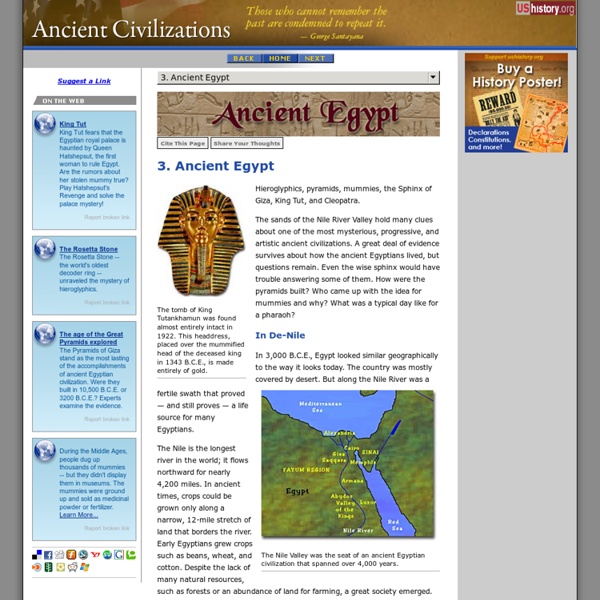Ancient Egypt

BBC History: The Story of the Nile
Fun lesson on Ancient Egypt with plan and resources
The opening of Tutankhamun’s tomb: a reconstruction relay The activity that forms the basis of this lesson is called reconstruction relay. It is GUARANTEED to enthuse even the most recalcitrant Y4 boy! Learning objectives pupils experience a sense of awe and wonder at finding these undiscovered ancient richesthey are able to accurately observe and represent in a quick field sketch the objects left in the tomb they work co-operatively in order to generate relevant historical questions Getting Started Use the following steps in conjunction with the provided Downloadable Resources (links shown right) to deliver the lesson. Step 1 The starter for the lesson is an activity called reconstruction relay. To make it really exciting you need to make a few adjustments to the classroom. Firstly, create a long tunnel by placing tables in a long row covered with cloth. Step 2 Pupils work in a team as archaeologists with Carter. Step 3 It is important at this stage NOT to look at their pictures. Step 4 Step 5
Facts About Ancient Egyptian Geography
How did the ancient Egyptian geography mold one of the earliest civilizations in the world? Read on to find out how it affected the lives and culture of the ancient Egyptians. The Making of a Thriving City Looking at its map, you will see that Egyptians built most of its cities near the Nile River. The Nile River also feed the Egyptians through vegetation. A beautiful scene of the Nile River and the Sahara Desert Geography and the Roots of Religion The geographic conditions in ancient Egypt showed the kind of gods they worshiped. The Reeds of Paper Papyrus reeds that grow naturally in the swamp river delta give Egyptians another option to take advantage for. Protecting a Civilization The geography of ancient Egypt also includes natural barriers to protect it from their enemies. With all of those things mentioned above, it kept the safety of ancient Egypt. Return To... Return from Ancient Egyptian Geography to Home Page
Related:
Related:



